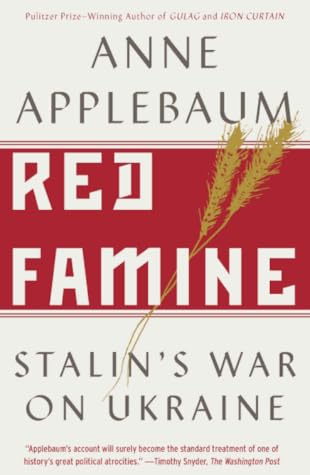More on this book
Community
Kindle Notes & Highlights
the American aid project, amplified by contributions from other foreign organizations, was allowed to go ahead, saving millions of lives.
The Bolsheviks were committed atheists who believed that churches were an integral part of the old regime. They were also revolutionaries who wanted to destroy even the memory of another kind of society. Churches—where villagers had gathered over many decades or centuries—remained a potent symbol of the link between the present and the past. In most Russian and many Ukrainian cities, the Bolsheviks had immediately sacked churches—between 1918 and 1930 they shut down more than 10,000 churches across the USSR, turning them into warehouses, cinemas, museums or garages.88 By the early 1930s few
...more
Most of the sixteen people arrested for “organized acts of sabotage in all sectors of agriculture: planning, land administration, crediting, machine supplies etc” were agronomists.
Not only could this educated, accomplished group be blamed for the multiple agricultural failures, its members could also be plausibly accused of spreading counter-revolutionary ideas among the rural peasants in the countryside. The trial was heavily covered by the Soviet press; most of the accused would spend between three and ten years in the Gulag.
“It may be objected that the vivisection of living animals is a sad and dreadful thing, and it is true that the lot of kulaks and others who have opposed the Soviet experiment is not a happy one,” he wrote in 1935. But “in both cases, the suffering inflicted is done with a noble purpose.”
There are facts too large to require eyewitness confirmation…There was no more need for investigation to establish the mere existence of the Russian famine than investigation to establish the existence of the American depression.
“To put it brutally—you can’t make an omelette without breaking eggs.”
The sense of disjunction, the gap between private and public memory, the gaping hole where the national mourning should have been—these things distressed Ukrainians for decades.
Although he later survived Nazi occupation and fought in the Second World War, nothing ever seemed more tragic to him than the experience of the famine. The memory stayed with him for decades, and he kept waiting for the famine to appear in official history.
Hitler had long claimed that “the occupation of Ukraine would liberate us from every economic worry,” and that Ukrainian territory would ensure “no one is able to starve us again, like in the last war.”
Contrary to stereotype, the German authorities were less efficient than their Soviet counterparts: peasant traders did get through the makeshift cordons—they had found it difficult to do so in 1933—and thousands of people took to the roads and railroads again in search of food. Shortages nevertheless multiplied throughout the occupation zone.
In 1945 one of the most eloquent Holodomor diarists, Oleksandra Radchenko, was literally persecuted for her private writing. During a search of her apartment the secret police confiscated her diary. Following a six-month interrogation, she was charged with having written a “diary with counter-revolutionary contents.” During her trial she told the judges that “the main aim of my writings was to devote them to my children. I wrote because after 20 years the children won’t believe what violent methods were used to build socialism.
genocide does not necessarily mean the immediate destruction of a nation, except when accomplished by mass killings of all members of a nation. It is intended rather to signify a coordinated plan of different actions aiming at the destruction of essential foundations of the life of national groups, with the aim of annihilating the groups themselves.


